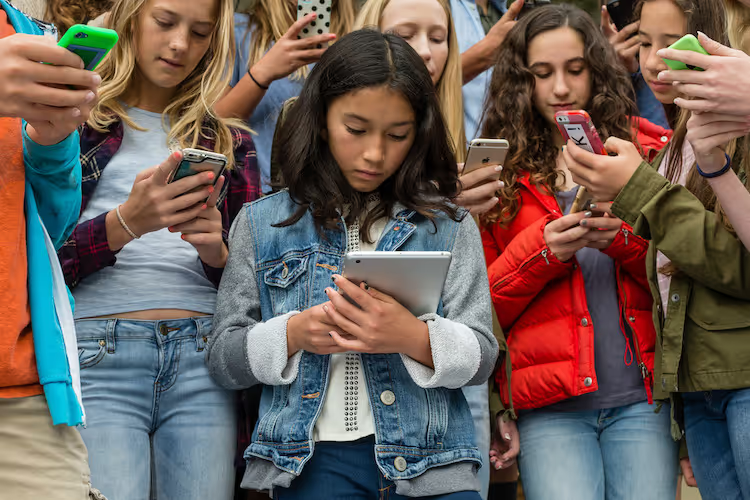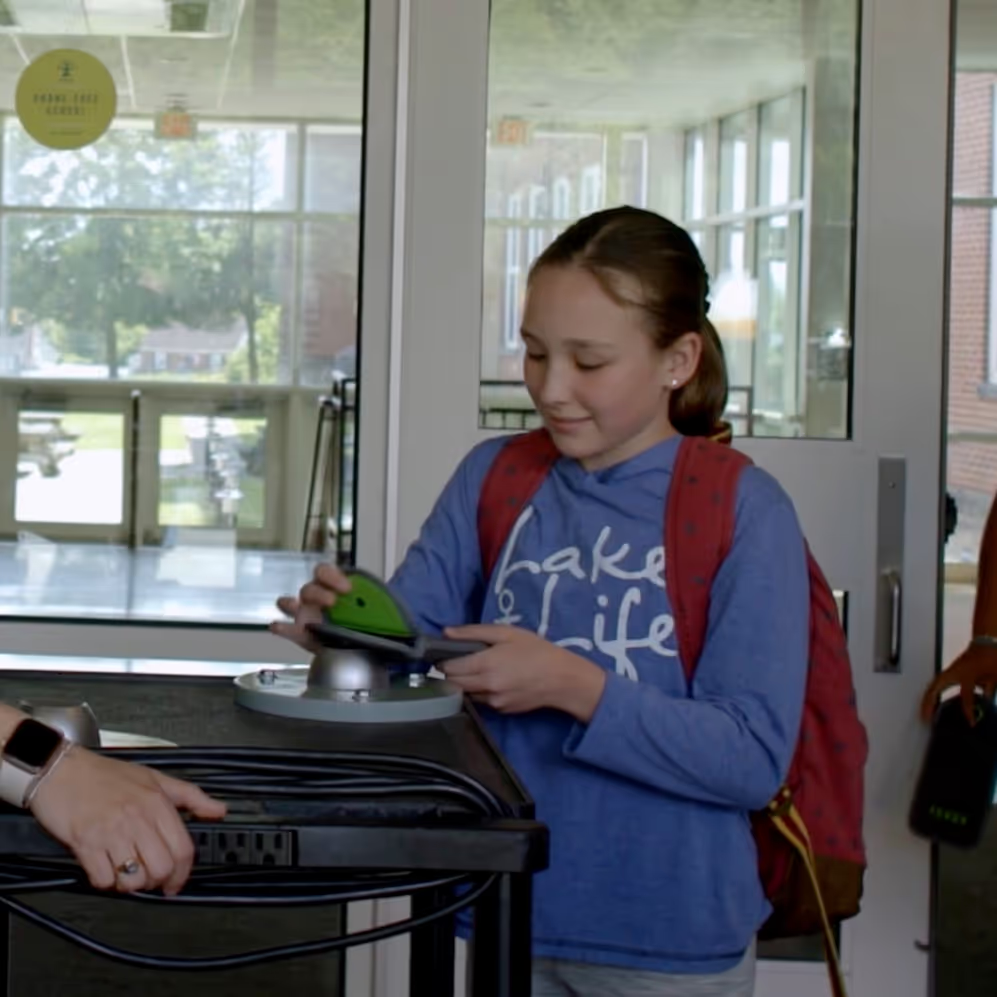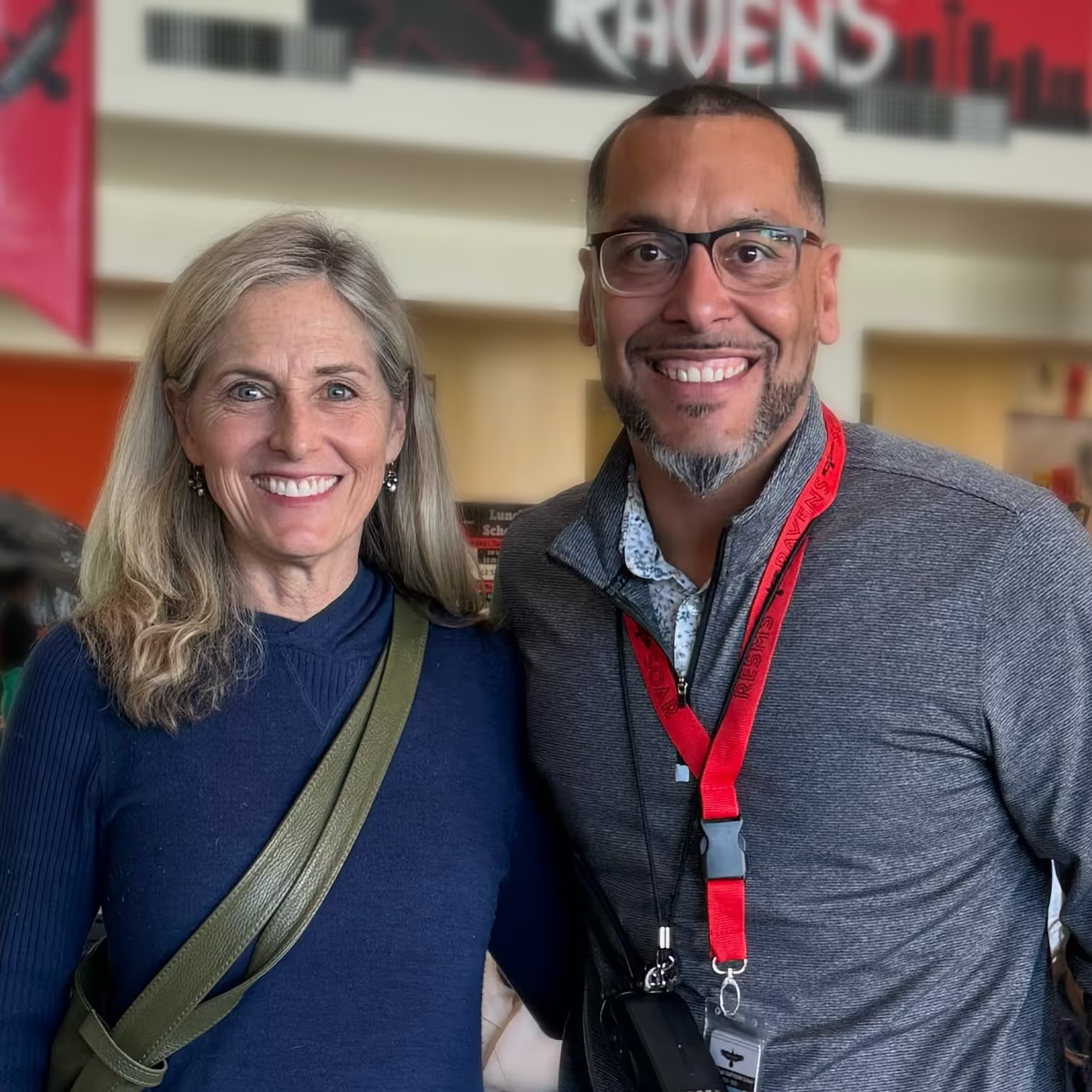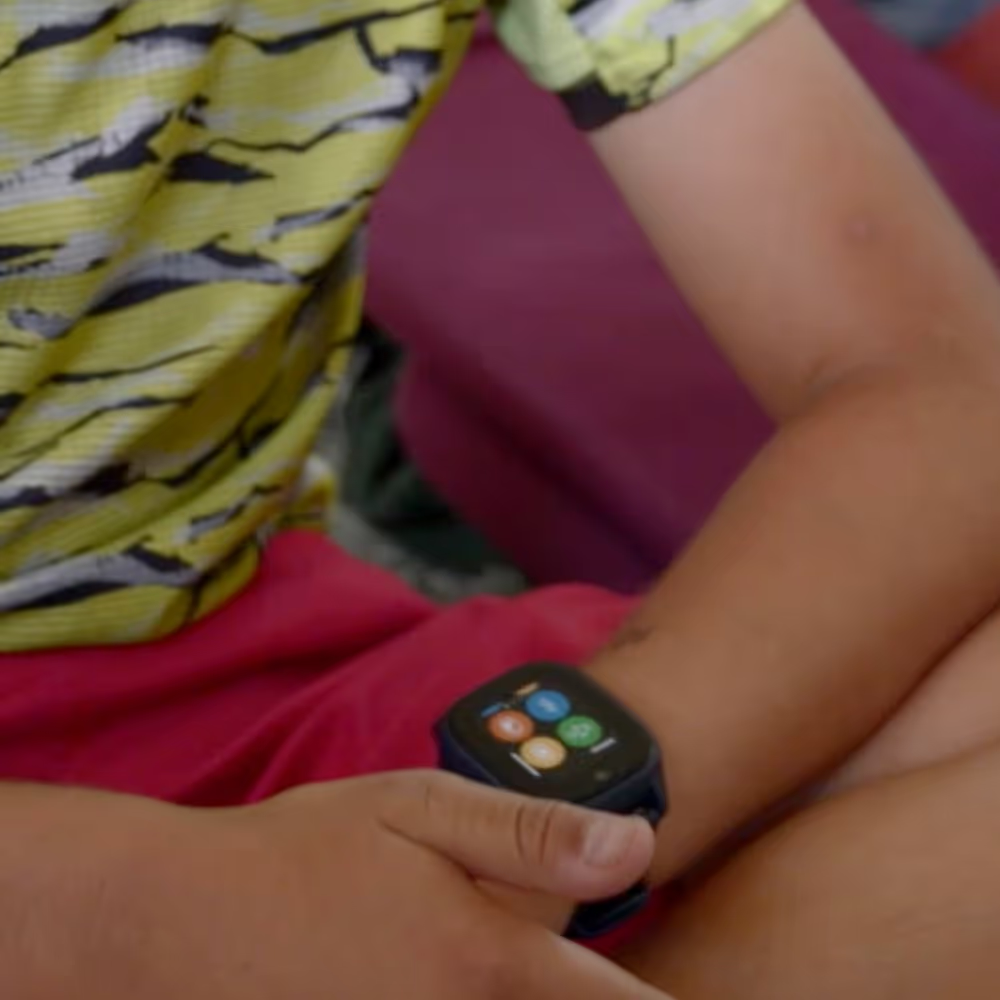



While I was making Screenagers, I became fascinated by the rapidly growing trend of schools deciding to give every single student on campus a digital device. When I learned that the Los Angeles Unified School District was launching one of these “one-to-one technology” programs and issuing an iPad to every student, I flew down to see for myself how it was going.
One of my favorite stories in the movie came from this trip. I interviewed a single mom and some of her 5 kids. They told me that being part of the program meant that some of the kids were struggling with schoolwork because of the constant pull and distraction of games and social media on their personal devices in school and at home.
In 2013, L.A. Unified bought 43,261 iPads and curriculum from the educational publishing company Pearson. Fast forward 3 years, "the $1.3-billion iPad effort ... faltered almost immediately," I read last week in the LA Times.
The project director for the Pearson curriculum portion of this massive 1:1 initiative said in a public status update:
"Attempts to make the Pearson System of Courses usable have required extraordinary, unsustainable, and unscalable resources from the Instructional Technology Initiative, Information Technology Division, and Pearson.
The summary from the report says:
"Despite the problems described above, students and teachers at Lizarraga and Coughlin continue to try to use the Pearson System of Courses regularly. These are the only two schools of 69 in the Instructional Technology Initiative that use Pearson regularly.
In these schools, any given class typically experiences one problem or more daily. Teachers report that the students enjoy the interactive content – when it’s available. When it’s not, teachers and students try to roll with the interruptions to teaching and learning as best they can. The remaining schools – with more than 35,000 students who should have easy access to the Pearson System of Courses in English language arts and Mathematics -- have given up on attempting regular use of the app"
And now according to the LA Times article
"The Los Angeles Unified School District is seeking to recoup millions of dollars from technology giant Apple over a problem-plagued curriculum that was provided with iPads intended to be given to every student, teacher and administrator."
Here are the questions this raises in my mind:
· Where are the results reports? Are there documented educational benefits that support investing millions of our dollars in one-to-one technology programs?
· How do schools cope with the distraction that digital devices bring into classrooms when students can easily access social media and other “prohibited” apps despite schools’ efforts to block them?
· Do these programs inadvertently exacerbate problems for lower-income families, who are already harder hit by the negative effects of too much screen time?
I would like to see more evidence that school districts thoroughly consider all the implications of implementing a one-to-one initiative before they invest. I hope that schools evaluating one-to-one programs look before they leap, and decide on technology plans and curriculum that help our children focus on becoming problem solvers, critical thinkers, idea generators, and collaborators.
As well as our weekly blog, we publish videos like this one every week on the Screenagers YouTube channel
Learn more about showing our movies in your school or community!
Join Screenagers filmmaker Delaney Ruston MD for our latest Podcast

Learn more about our Screen-Free Sleep campaign at the website!
Our movie made for parents and educators of younger kids
Learn more about showing our movies in your school or community!
Learn more about showing our movies in your school or community!
Join Screenagers filmmaker Delaney Ruston MD for our latest Podcast

Learn more about our Screen-Free Sleep campaign at the website!
Our movie made for parents and educators of younger kids
Join Screenagers filmmaker Delaney Ruston MD for our latest Podcast
As we’re about to celebrate 10 years of Screenagers, we want to hear what’s been most helpful and what you’d like to see next.
Please click here to share your thoughts with us in our community survey. It only takes 5–10 minutes, and everyone who completes it will be entered to win one of five $50 Amazon vouchers.

While I was making Screenagers, I became fascinated by the rapidly growing trend of schools deciding to give every single student on campus a digital device. When I learned that the Los Angeles Unified School District was launching one of these “one-to-one technology” programs and issuing an iPad to every student, I flew down to see for myself how it was going.
One of my favorite stories in the movie came from this trip. I interviewed a single mom and some of her 5 kids. They told me that being part of the program meant that some of the kids were struggling with schoolwork because of the constant pull and distraction of games and social media on their personal devices in school and at home.
In 2013, L.A. Unified bought 43,261 iPads and curriculum from the educational publishing company Pearson. Fast forward 3 years, "the $1.3-billion iPad effort ... faltered almost immediately," I read last week in the LA Times.
The project director for the Pearson curriculum portion of this massive 1:1 initiative said in a public status update:
"Attempts to make the Pearson System of Courses usable have required extraordinary, unsustainable, and unscalable resources from the Instructional Technology Initiative, Information Technology Division, and Pearson.
The summary from the report says:
"Despite the problems described above, students and teachers at Lizarraga and Coughlin continue to try to use the Pearson System of Courses regularly. These are the only two schools of 69 in the Instructional Technology Initiative that use Pearson regularly.
In these schools, any given class typically experiences one problem or more daily. Teachers report that the students enjoy the interactive content – when it’s available. When it’s not, teachers and students try to roll with the interruptions to teaching and learning as best they can. The remaining schools – with more than 35,000 students who should have easy access to the Pearson System of Courses in English language arts and Mathematics -- have given up on attempting regular use of the app"
And now according to the LA Times article
"The Los Angeles Unified School District is seeking to recoup millions of dollars from technology giant Apple over a problem-plagued curriculum that was provided with iPads intended to be given to every student, teacher and administrator."
Here are the questions this raises in my mind:
· Where are the results reports? Are there documented educational benefits that support investing millions of our dollars in one-to-one technology programs?
· How do schools cope with the distraction that digital devices bring into classrooms when students can easily access social media and other “prohibited” apps despite schools’ efforts to block them?
· Do these programs inadvertently exacerbate problems for lower-income families, who are already harder hit by the negative effects of too much screen time?
I would like to see more evidence that school districts thoroughly consider all the implications of implementing a one-to-one initiative before they invest. I hope that schools evaluating one-to-one programs look before they leap, and decide on technology plans and curriculum that help our children focus on becoming problem solvers, critical thinkers, idea generators, and collaborators.
As well as our weekly blog, we publish videos like this one every week on the Screenagers YouTube channel
Sign up here to receive the weekly Tech Talk Tuesdays newsletter from Screenagers filmmaker Delaney Ruston MD.
We respect your privacy.

While I was making Screenagers, I became fascinated by the rapidly growing trend of schools deciding to give every single student on campus a digital device. When I learned that the Los Angeles Unified School District was launching one of these “one-to-one technology” programs and issuing an iPad to every student, I flew down to see for myself how it was going.
One of my favorite stories in the movie came from this trip. I interviewed a single mom and some of her 5 kids. They told me that being part of the program meant that some of the kids were struggling with schoolwork because of the constant pull and distraction of games and social media on their personal devices in school and at home.
In 2013, L.A. Unified bought 43,261 iPads and curriculum from the educational publishing company Pearson. Fast forward 3 years, "the $1.3-billion iPad effort ... faltered almost immediately," I read last week in the LA Times.
The project director for the Pearson curriculum portion of this massive 1:1 initiative said in a public status update:
"Attempts to make the Pearson System of Courses usable have required extraordinary, unsustainable, and unscalable resources from the Instructional Technology Initiative, Information Technology Division, and Pearson.
The summary from the report says:
"Despite the problems described above, students and teachers at Lizarraga and Coughlin continue to try to use the Pearson System of Courses regularly. These are the only two schools of 69 in the Instructional Technology Initiative that use Pearson regularly.
In these schools, any given class typically experiences one problem or more daily. Teachers report that the students enjoy the interactive content – when it’s available. When it’s not, teachers and students try to roll with the interruptions to teaching and learning as best they can. The remaining schools – with more than 35,000 students who should have easy access to the Pearson System of Courses in English language arts and Mathematics -- have given up on attempting regular use of the app"
And now according to the LA Times article
"The Los Angeles Unified School District is seeking to recoup millions of dollars from technology giant Apple over a problem-plagued curriculum that was provided with iPads intended to be given to every student, teacher and administrator."
Here are the questions this raises in my mind:
· Where are the results reports? Are there documented educational benefits that support investing millions of our dollars in one-to-one technology programs?
· How do schools cope with the distraction that digital devices bring into classrooms when students can easily access social media and other “prohibited” apps despite schools’ efforts to block them?
· Do these programs inadvertently exacerbate problems for lower-income families, who are already harder hit by the negative effects of too much screen time?
I would like to see more evidence that school districts thoroughly consider all the implications of implementing a one-to-one initiative before they invest. I hope that schools evaluating one-to-one programs look before they leap, and decide on technology plans and curriculum that help our children focus on becoming problem solvers, critical thinkers, idea generators, and collaborators.
As well as our weekly blog, we publish videos like this one every week on the Screenagers YouTube channel

This year, millions of students are experiencing a major shift: school days without phones, smartwatches, or other personal devices. Today we explore the wins, hurdles, and solutions helping schools succeed. We also share our resources that you can use to support technology policy changes in your schools.
READ MORE >
I recently sat down with middle school principal Zach at his school in Washington State. We talked about the challenges Zach and his team faced in his early years as principal when students used phones during school, and how he brought about a powerful transformation by having phones and smartwatches put away in locked pouches for the whole school day. In today’s blog, to raise awareness of the challenges, I share five real examples from Zach of the troubling ways students use phones at school to be unkind.
READ MORE >
It is with great pleasure that I share with you today a piece that Lisa Tabb and I did for Jonathan Haidt's (Author of The Anxious Generation) and researcher Zack Rausch's Substack blog — After Babel. In it, we discuss the rise in use of smartwatches in elementary schools and the problems they pose. There is a real cost to arming (pun intended) our kids with these devices and sending them to school. Now is the time to stop and fully address this topic and ensure that schools become smartwatch and phone-free.
READ MORE >for more like this, DR. DELANEY RUSTON'S NEW BOOK, PARENTING IN THE SCREEN AGE, IS THE DEFINITIVE GUIDE FOR TODAY’S PARENTS. WITH INSIGHTS ON SCREEN TIME FROM RESEARCHERS, INPUT FROM KIDS & TEENS, THIS BOOK IS PACKED WITH SOLUTIONS FOR HOW TO START AND SUSTAIN PRODUCTIVE FAMILY TALKS ABOUT TECHNOLOGY AND IT’S IMPACT ON OUR MENTAL WELLBEING.
